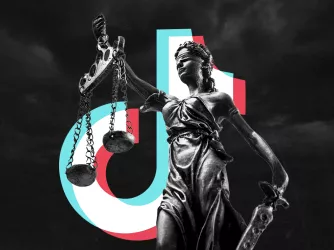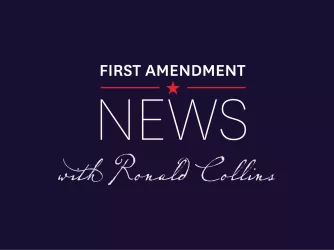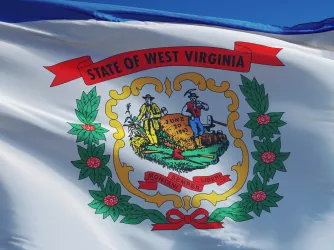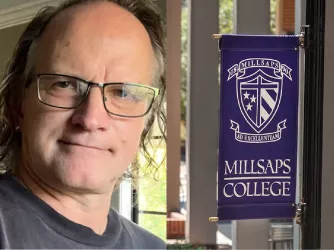Table of Contents
'Harvard Law Review' Note Tackles Complex Issue of Distinguishing Government Versus Private Speech
A student note published in the most recent volume of the Harvard Law Review advances a cogent approach to differentiating between government and private speech that would lend clarity to First Amendment law. Unfortunately, the note (Three's a Crowd - Defending the Binary Approach to Government Speech, 124 Harv. L. Rev. 805 (2011)) supports a very robust usage of the "government speech doctrine" that might prove too deferential to the government.
According to the note,
With its 2009 decision in Pleasant Grove City v. Summum, [129 S. Ct. 1125 (2009)], the Supreme Court held that a Ten Commandments monument placed by a city in a public park was government speech, even though the monument had been designed and submitted by a private group. The decision marked another step in the Court's increasingly confident use of the government speech doctrine, which seems poised to supplant forum analysis in many situations in which both private individuals and the public could be seen to be speaking.
Following this introduction, the Harvard Law Review note tackles the complex but important question of how to determine whether speech belongs to the government or to private citizens. This determination has a profound effect on the type of First Amendment protection that speech receives. When the government is speaking, it can tailor its message to favor a particular viewpoint, but the government may not discriminate against the views of private individuals. The note deals specifically with the problem of categorizing speech that is created through both governmental and private participation, and it proposes an intelligent and workable solution to classifying this type of "mixed" speech. Whether this solution is too deferential to the government, however, remains to be seen.
Government Speech vs. Forum Analysis
For the past three decades, courts have determined the protections afforded to speech by applying "forum analysis," which classifies the forum in which speech occurs. For example, speech that occurs in parks or streets, considered traditional public forums, receives the most protection against governmental censorship. When the government sets up any other type of forum-like when it lends its facilities and funding to create student organizations at public universities-the government may impose greater restrictions but may not discriminate against speech on the basis of its viewpoint. Thus, public universities cannot refuse to fund a pro-choice group if they allow a pro-life organization. This protects the private speech of students against unnecessary governmental manipulation when the government donates some resources to accommodate expression by private individuals.
Categorization of speech according to forum, however, has proven difficult to administer. Recently, courts and scholars have found it increasingly problematic to determine which protections apply to speech that has some governmental and some private elements. For example, many pundits who discussed last year's Supreme Court decision in Christian Legal Society v. Martinez argued incorrectly that because a public university lends school facilities to student organizations, the student organizations' speech is essentially public and indistinguishable from that of the government. According to this view, the university would have greater ability to control a student organization's speech, because that speech may be attributed to the school.
Further complicating the issue is the fact that the government sometimes wishes to speak for itself. In those instances, the government should be entitled to discriminate on the basis of viewpoint so that it can most effectively promote its message. As Chief Justice John Roberts asked rhetorically in 2008, does the existence of the Statue of Liberty also require the government to purchase a "statue of despotism"?
The Supreme Court answered "no" to an analogous question in the case of Rust v. Sullivan, 500 U.S. 173 (1991). Rust held that the federal government may forbid health care providers who accept federal funding from advocating abortion as a method of family planning. Citing Rust, the Harvard Law Review explains that the Supreme Court has begun to more confidently use "the government speech doctrine."
To Whom Does Private Speech Belong?
As you might predict, greater use of the government speech doctrine has led to vocal opposition. When speech is categorized as government speech, even if it is uttered by private individuals, the government may discriminate on the basis of viewpoint in places it wouldn't be permitted to using forum analysis. Opponents of the decision in Rust argue that the government basically co-opted private speakers into delivering its own message. Proponents of Rust contend, however, that the government should not have to give funding to those who deliver a message that the government does not believe is in the best interest of society.
In recognition of the fact that speech often contains both private and public elements, scholars and courts have begun employing a "hybrid approach," which balances factors to decide whether speech is predominantly private or governmental. This approach considers the purpose of the program in which the speech occurs, the degree of control exercised by the government, the party that bears ultimate responsibility for the speech, and the identity of the actual speaker. Using this method, the Fourth Circuit in Planned Parenthood of South Carolina Inc. v. Rose, 361 F.3d 786 (4th Cir. 2004), held that a state's production of vanity license plates is "hybrid" speech that is a mixture of private and governmental speech. According to the Fourth Circuit, the state engaged in unconstitutional viewpoint discrimination by printing only "Choose Life" specialty license plates but not pro-choice license plates.
The Harvard Law Review note deftly rejects this hybrid approach as involving unclear balancing, conflating separate speech acts, and focusing on irrelevant factors. Instead of thinking of speech as a pie, and determining whether the government or individuals have a larger slice, the note proposes splitting hybrid speech into different speech acts. According to the note, the Fourth Circuit incorrectly decided Rose because a specialty license plate program actually contains two speech acts. The first speech act is the government's decision to print "Choose Life" license plates, and the second speech act is an individual motorist's voluntary decision to purchase and display the "Choose Life" vanity plate. Any passerby would understand, according to the note, that the display of this specialty plate means that both the government and the motorist endorse the message. Just because an individual motorist has decided to be the speaker who displays the plate does not make the government's decision to fund "Choose Life" plates any less government speech, according to the note.
The Binary Approach
The note thus supports a "binary" approach to government speech that classifies speech as either purely government or purely private. The note suggests that courts focus on how much control the government has over particular speech in making this classification. If the government funds speech and exercises complete editorial control over the message, it is government speech, regardless of who ultimately delivers the message. Student organizations, therefore, would still be private speakers, because most universities claim that speech by student groups represents the individual views of the organizations.
And what about the difficult problem of doctors denied the ability to advocate for abortion in Rust v. Sullivan? Aren't these doctors private speakers that are coerced into silence if they accept federal funding? The note proposes limiting the decision in Rust to its own facts and using a high bar to determine whether or not the government has exercised control over a speaker's message. In the case of Rust, the government exercised limited control over the speech of the doctors in almost every regard, and did not interfere with their medical examinations, except to tell doctors that they cannot voice a particular viewpoint about abortion (the epitome of viewpoint discrimination). The doctor's speech then appears more like private speech—where the government wishes to use its spending power to impermissibly suppress a particular viewpoint—than government speech. Rust would probably not be considered government speech under the note's proposed test.
Accepting the note's vision would allow the government to discriminate against viewpoints in more situations, including determining which vanity plates to print (the Fourth Circuit's opinion in Planned Parenthood would likely be overturned) and which monuments to display in public parks. This would give the government a large advantage in getting its own opinions heard by allowing government resources to fund private speakers who promote a singular message. The note believes, however, that maintaining a high bar on whether the government actually exercises control over speech would "require[] intense supervision that is the functional equivalent of approving every word disseminated by private groups." Thus, only a small percentage of speech will actually be classified as government speech.
Anyone interested in the difficulties presented by speech that intertwines both governmental and private expression should read this lucid and nuanced take on the issue.
Recent Articles
FIRE’s award-winning Newsdesk covers the free speech news you need to stay informed.

FIRE statement on Supreme Court’s ruling in TikTok v. Garland

‘The lawsuit is the punishment’: Reflections on Trump v. Selzer — First Amendment News 453

West Virginia Executive Order on ‘DEI’ unconstitutionally limits university classroom discussions.
